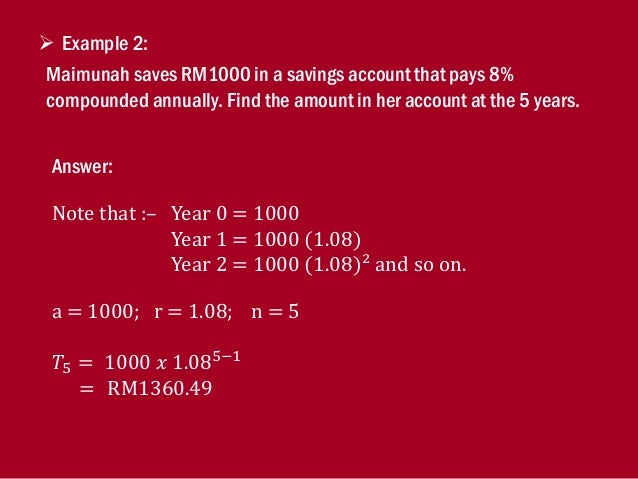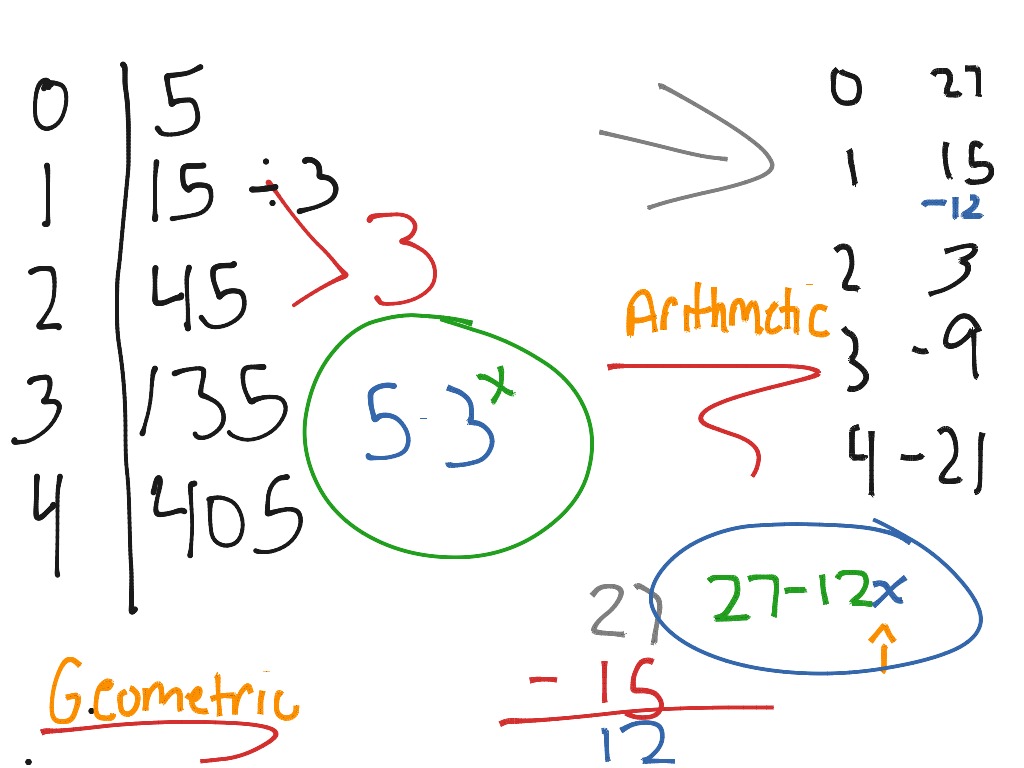

- Best explanation of geometric and arithmetic sequences how to#
- Best explanation of geometric and arithmetic sequences series#
Notice the S does not have the subscript n as in S n S n as we are not adding a finite number of terms. This formula gives us the sum of the infinite geometric sequence.
Best explanation of geometric and arithmetic sequences series#
In our sum formula, we can replace the r n r n with zero and then we get a formula for the sum, S, for an infinite geometric series when | r | < 1. As n approaches infinity, (gets infinitely large), r n r n gets closer and closer to zero. In this case, we call the series convergent. When | r | < 1, | r | < 1, the expression r n r n gets smaller and smaller. Notice the sum gets larger and larger but also gets closer and closer to one. Let’s look at a few finite sums for this series. Here the terms get smaller and smaller as n gets larger.

Let’s look at an infinite geometric series whose common ratio is a fraction less than one,ġ 2 + 1 4 + 1 8 + 1 16 + 1 32 + 1 64 + … 1 2 + 1 4 + 1 8 + 1 16 + 1 32 + 1 64 + …. We cannot find a sum of an infinite geometric series when | r | ≥ 1. This is true when | r | ≥ 1 | r | ≥ 1 and we call the series divergent. Let’s look at a few partial sums for this series. Each term gets larger and larger so it makes sense that the sum of the infinite number of terms gets larger. Let’s look at the infinite geometric series 3 + 6 + 12 + 24 + 48 + 96 + …. But how do we find the sum of an infinite sum?
Best explanation of geometric and arithmetic sequences how to#
We know how to find the sum of the first n terms of a geometric series using the formula, S n = a 1 ( 1 − r n ) 1 − r. S n = a 1 ( 1 − r n ) 1 − r S n = a 1 ( 1 − r n ) 1 − rĪn infinite geometric series is an infinite sum whose first term is a 1 a 1 and common ratio is r and is writtenĪ 1 + a 1 r + a 1 r 2 + … + a 1 r n − 1 + … a 1 + a 1 r + a 1 r 2 + … + a 1 r n − 1 + … S n ( 1 − r ) = a 1 ( 1 − r n ) S n ( 1 − r ) = a 1 ( 1 − r n )ĭivide both sides by ( 1 − r ). S n = a 1 + a 1 r + a 1 r 2 + a 1 r 3 + … + a 1 r n − 1 r S n = a 1 r + a 1 r 2 + a 1 r 3 + … + a 1 r n − 1 + a 1 r n _ S n − r S n = a 1 −a 1 r n S n = a 1 + a 1 r + a 1 r 2 + a 1 r 3 + … + a 1 r n − 1 r S n = a 1 r + a 1 r 2 + a 1 r 3 + … + a 1 r n − 1 + a 1 r n _ S n − r S n = a 1 −a 1 r n We will see that when we subtract, all but the first term of the top equation and the last term of the bottom equation subtract to zero. + a 1 r n r S n = a 1 r + a 1 r 2 + a 1 r 3 +. Let’s also multiply both sides of the equation by r. + a 1 r n − 1 S n = a 1 + a 1 r + a 1 r 2 +. We can write this sum by starting with the first term, a 1, a 1, and keep multiplying by r to get the next term as:

The sum, S n, S n, of the first n terms of a geometric sequence is written as S n = a 1 + a 2 + a 3 +. We will now do the same for geometric sequences. We found the sum of both general sequences and arithmetic sequence. įind the Sum of the First n Terms of a Geometric Sequence Ⓑ Find the ratio of the consecutive terms. To determine if the sequence is geometric, we find the ratio of the consecutive terms shown. \)ĭetermine if each sequence is geometric.


 0 kommentar(er)
0 kommentar(er)
